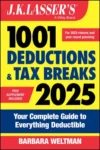What the SECURE Act Means to You: 10 Key Changes
As part of a massive year-end domestic spending package, called the Further Consolidated Appropriations Act, 2020 (H.R. 1865), numerous changes were made to retirement plans and IRAs. These changes were in the Setting Every Community Up for Retirement Enhancement (SECURE) Act, which were enacted as part of this spending measure. Most of the rules are highly favorable, but the rule for distributions to beneficiaries is not, as explained below. Here are 10 key changes:
1. No age limit to IRA contributions
Until now, you could not make contributions to traditional IRAs starting in the year in which you attained age 70½. Under the new law, there is no age limit for contributions made for 2020 or later. Anyone with earned income from a job or self-employment (or other types of payments designated as compensation for IRA purposes) can contribute to a traditional IRA for years after 2019, regardless of age. The age 70½ limit still applies for 2019 contributions, including contributions made in 2020 by the April 15 filing due date; if you were age 70½ at the end of 2019, the contribution for 2019 is not allowed. Note that there has never been an age limit for contributing to a Roth IRA; this has not changed.
2. Delayed RMDs
Until now, you had to commence taking required minimum distributions (RMDs) from your retirement accounts and IRAs by the end of the year in which you attained age 70½. You could postpone the first RMD to April 1 of the following year, but that was it. The new law allows those who reach age 70½ after 2019 to delay RMDs from qualified retirement plans and IRAs until age 72 (the first RMD can be postponed until April 1 of the year after the year in which age 72 is attained). This allows slightly more deferral for retirement savings before RMDs must begin. Those who turned 70½ before 2020 do not benefit from the law change; they must receive RMDs under the prior rules and cannot suspend RMDs until age 72.
3. New exception for early distribution penalty
Distributions from a qualified retirement plan or IRA are subject to a 10% penalty unless a penalty exception applies. Starting in 2020, there is a new limited penalty exception. It is for distributions for costs up to $5,000 related to the birth or adoption of a child.
4. Student loan repayments
Distributions from 529 plans are tax free if used to pay qualified education costs. For 2019 and later, “qualified education costs” includes repayments of student loan principal or interest up to $10,000. No deduction for student loan interest is allowed to the extent that a tax-free distribution is used to pay the interest.
5. Difficulty of care payments
Difficulty of care payments to home day care providers are tax free. However, starting in 2020, these payments are treated as compensation to enable such workers to make nondeductible contributions to a qualified retirement plan or IRA.
6. Certain graduate student assistance
Stipends and non-tuition payments for graduate and postdoctoral students usually are not treated as taxable compensation. Starting in 2020, these payments are treated as such for purposes of making IRA contributions.
7. Certain qualified disaster distributions
Distributions from an IRA or qualified retirement plan made after 2017 and before June 17, 2020 (180 days after December 20, 2019, the date of enactment) of up to $100,000 are not subject to the 10% early distribution penalty. These distributions must be occasioned by losses from disasters that began before December 20, 2019 in areas that were declared by the President to be major disaster areas after 2017 but not later than February 18, 2020 (60 days after date of enactment). The distributions remain taxable.
8. 401(k) participation for part-timers
Starting in 2024, the new law requires employers with 401(k) plans to permit participation by long-time part-time employees. These are employees who work more than 500 but less than 1,000 hours per year.
9. Benefits for volunteer firefighters and emergency medical responders
For 2020 only, the new law reinstates an exclusion (that expired at the end of 2010) for qualified reimbursement payments made to these first responders. The 2020 exclusion is $50 multiplied by the number of months during such year that the taxpayer performs such services (the exclusion before 2011 was $30 per month).
10. Accelerated distributions for beneficiaries
Currently, non-spouse beneficiaries who inherit retirement accounts or IRAs can spread their RMDs over their life expectancy (based on an IRS table used for this purpose). However, under the new law, most beneficiaries who inherit these accounts from a decedent dying after 2019 must fully deplete the account within 10 years. This accelerated distribution rule does not apply to the following beneficiaries:
- Surviving spouses, who can roll over their inherited accounts and treat them as their own.
- Minor children of the deceased plan participant or IRA owner, but this exception ceases to apply when the child reaches the age of majority; the remainder of the distribution must be completed within 10 years of the age of majority.
- Disabled individual, which is a person unable to engage in any substantial gainful activity due to a medically determinable physical or mental impairment or a chronically ill individual unable to perform at least two activities of daily living as of the date of the death of the plan participant or IRA owner.
- Any individual who is not more than 10 years younger than the deceased participant or IRA owner.
Conclusion
In the coming months, there is sure to be guidance on these law changes. We’ll bring them to you.



